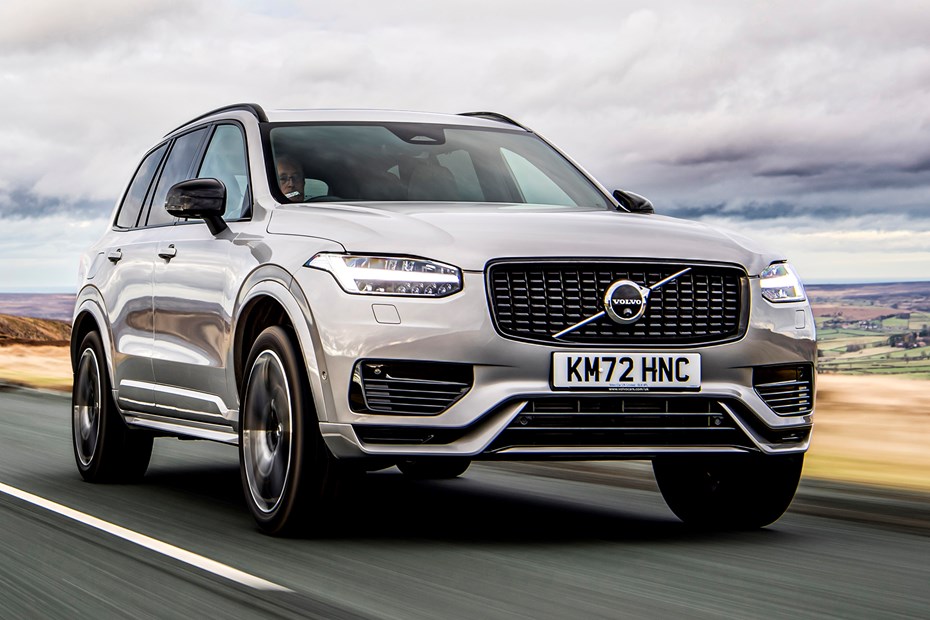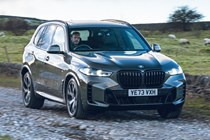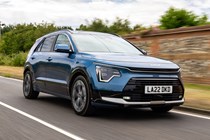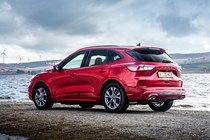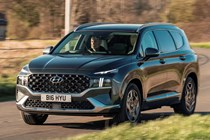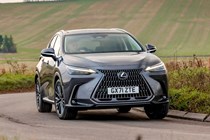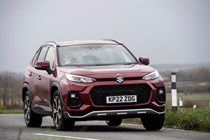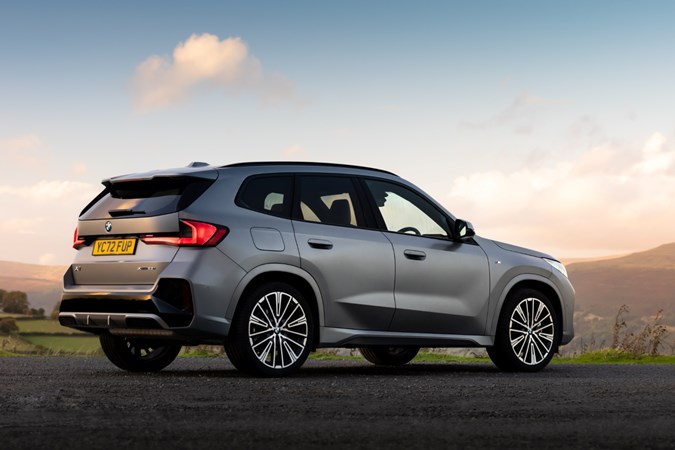The best hybrid cars come in all shapes and sizes but few are as popular as the scores of hybrid SUVs out there. SUVs are among the most in-demand vehicles in the UK – they often feature in the Top 10 best-selling cars, and manufacturers tend to use them as the proving ground for their latest and best technology.
Plug-in hybrid SUVs achieved widespread popularity with the Mitsubishi Outlander PHEV a decade ago and they’ve gone from strength to strength since. They appeal thanks to their do-anything promise – they can be an EV for the commute and a petrol car for the weekends; an efficient runaround or a hardworking family bus as needed. Plug-in hybrid SUVs and estate cars attract very low company car tax, but can often suffice as a family’s only car where some EVs might struggle.
This list includes the best plug-in hybrid SUVs on sale today, ranging from small, efficient family cars to massive luxury models. We’ve even included a couple of seven-seaters, though we’ve a separate list of the best seven-seater hybrid cars if people-carrying is high on your list of priorities.
We’ve put together a list of our favourite hybrid SUVs. You can scroll down to read what the picks of the crop are.
The best plug-in hybrid SUVs 2025
Not cheap, but so good you won’t regret spending the money
It’ll do over 40 miles of real-world electric range, a very usable figure. Yet when you run out of battery you don’t have to fall back on a stingy little engine – instead, you get a silky-smooth six-cylinder petrol with loads of power. The X5’s interior is a fantastic place to sit, too, and for such a large car it handles impressively well, while a recent update has freshened the design and technology. We reckon it’s well worth the steep purchase price.
Read our full BMW X5 review
Pros
- Excellent to drive
- Long electric range
- Practical and premium interior
Cons
- BMW servicing is more expensive than rivals
- No seven-seat option
Compact, spacious and dependable
It’s no hot hatchback but the Niro PHEV is decently peppy, and will run for about 30 miles on pure electric against a claimed range of 38 miles. City streets do show off a slightly firm ride, though.
Read our full Kia Niro review
Pros
- Seven-year warranty
- Straightforward interior
- Available as self-charging or full EV too
Cons
- Hard ride
- Not exciting to drive
Ultimate plug-in luxury
Range Rover offers two plug-in hybrid powertrains, both immensely powerful and paired to a smooth six-cylinder petrol engine. Their massive battery packs mean they’ll do over 50 miles on a charge. Just don’t think this necessarily means low running costs – the batteries themselves will cost quite a lot to charge up, even on a special electric vehicle tariff.
Read our full Range Rover Sport review
Pros
- Over 50 miles of electric range
- Fantastic to drive
- Luxurious interior
Cons
- More expensive than rivals
- Servicing is also costlier
Good to drive, useful to live with
A practical space for passengers, the Kuga does suffer with a smallish boot and a dull interior. But in all other aspects it’s a very practical family PHEV.
Read our full Ford Kuga review
Pros
- Handles well
- Very efficient
- Cost-effective
Cons
- Dull interior
- Boot could be bigger
Large and in charge – good value PHEV seven-seater
Hyundai’s infotainment and technology are excellent – really easy to use – and the Santa Fe comes well-equipped even in its cheapest form. That doesn’t mean it’s a low-cost option, though compared to the other large SUVs on this list it still looks like a bit of a bargain. A new generation of Santa Fe is due shortly, and is expected to be another significant step forward.
Read our full Hyundai Santa Fe review
Pros
- Seven seats in a PHEV
- Five-year, unlimited-mileage warranty
- Also available as self-charging hybrid
Cons
- Expensive compared with rivals
- Dull to drive
Getting on in years, but still a great SUV
The smallish infotainment screen with its fiddly onscreen buttons does show the car’s advancing years, though, and it rather chomps through petrol once you’ve discharged the approximately 30 miles of electric range.
Read our full Volvo XC90 review
Pros
- Safety is a priority
- Well-proven PHEV powertrain
- Seven seats
Cons
- Starting to feel dated in places
- Thirsty with a discharged battery
Premium plug-in is a huge improvement over its predecessor
The Lexus’ interior feels built to last a nuclear reactor and there are few brands with as strong a record on reliability. Not all of the tech feels as straightforward as we’d like, but most of it can be avoided in everyday use.
Read our full Lexus NX review
Pros
- Around 50 miles of EV range
- Should be reliable
- Comfortable ride
Cons
- More expensive than similar Toyota RAV4
- Some tech feels gimmicky
A choice of two plug-in hybrid drivetrains in posh compact SUV
The X1’s interior is dominated by a huge swathe of screens which though they look rather intimidating at first are actually very intuitive to use. It’s a shame, though, that BMW has ditched its iDrive controller and gone touchscreen-only – it feels like a step backwards.
Read our full BMW X1 review
Pros
- Fantastic interior
- Great infotainment
- Fun to drive
Cons
- Not really a small SUV anymore
- Best kit is optional
Two virtually identical models, both great
Regardless of which you pick, you’ll get a spacious family SUV with a great electric range and a comfortable drive. Just a slightly cheap-feeling interior and sub-par infotainment let the side down.
Read our full Toyota RAV4 review
Read our full Suzuki Across review
Pros
- Long electric range
- Should prove dependable
- Good warranty from both brands
Cons
- Interior a bit cheap feeling
- Choose your spec carefully
Amazingly powerful sports SUV made better with hybrid power
Even though Porsche’s better-known for its sports cars than its family-friendly transport, the Cayenne’s spacious and practical enough for hard labour. Just be prepared to voyage into the options list if you want the best tech – and to pay for it accordingly.
Read our full Porsche Cayenne review
Pros
- Cracking to drive
- Premium interior
- More spacious than you might expect from a Porsche
Cons
- Electric range not the longest
- Optional extras ramp up the price
Best plug-in hybrid SUVs FAQ
What is the difference between a hybrid SUV and a plug-in hybrid SUV?
Both types of SUV are powered by a combination of a petrol or diesel engine and an electric motor with battery pack. They’re a complex stepping stone between ICE and EV, offering some of the advantages and drawbacks of both.
The key difference between a hybrid SUV and a plug-in hybrid SUV is that the latter has a much larger battery and motor and needs to be plugged in to keep it topped up. The former’s battery is solely charged up by the engine (hence being known as a self-charging hybrid), which means you don’t have to deal with cables and public charging.
What are the benefits of a plug-in hybrid SUV?
The main benefits of a PHEV are potential economy and emissions and the ability to run on battery alone, like an electric car. Day to day, shorter journeys that require less power can be completed purely on the electric battery, which meakes these cars excellent for commuting, especially if you have workplace as well as home charging. This could not only reduce your running costs, but also your carbon footprint.
What is the electric battery range of a plug-in hybrid SUV?
Typically, most PHEV SUVs will go between 20 and 40 miles on battery alone, although this depends on driving styles and weather – in winter batteries are less efficient, and you can lose up to 30% of range. Mercedes’ plug-in hybrids have some of the longest, with its GLC 300e promising up to 80 miles of range from a charge.
How long does it take to charge a plug-in hybrid SUV?
Because they have smaller batteries than EVs, PHEVs don’t take as long to charge. The vast majority are also not compatible with public rapid chargers, though the number that are is increasing. Plug-in hybrids tend to take about three hours on a 7.4kW homecharger or pubic destination charger, and double that via your standard three-pin 240v socket. The time they take will depend on the size of their on-board charger and the size of the battery.
How does a plug-in hybrid SUV work?
Plug-in hybrid SUVs are a popular subset of these cars. What do we mean by plug-in hybrid? Well, these are hybrids with a large battery and a powerful electric motor, capable of acting like a fully electric car for a usable mileage – usually between 25-50 miles. But once you’ve expended all your battery power, there’s still an engine there for backup.
Just so you know, we may receive a commission or other compensation from the links on this website - read why you should trust us.


